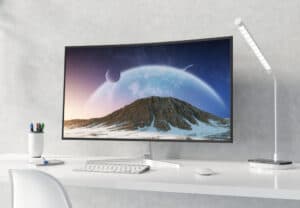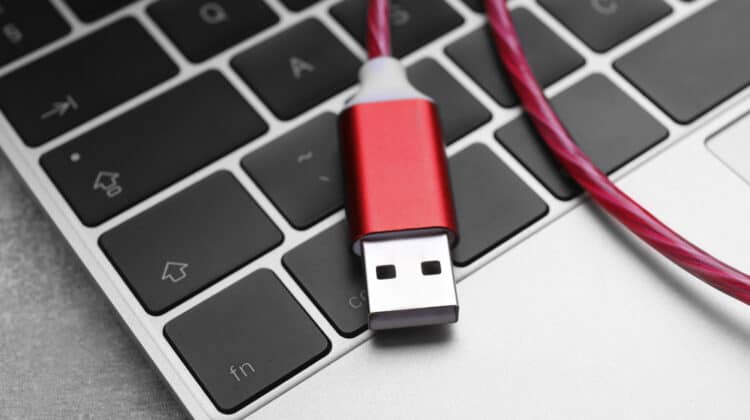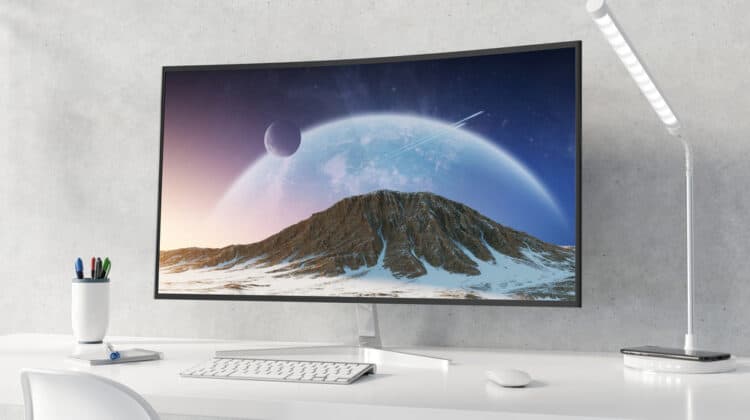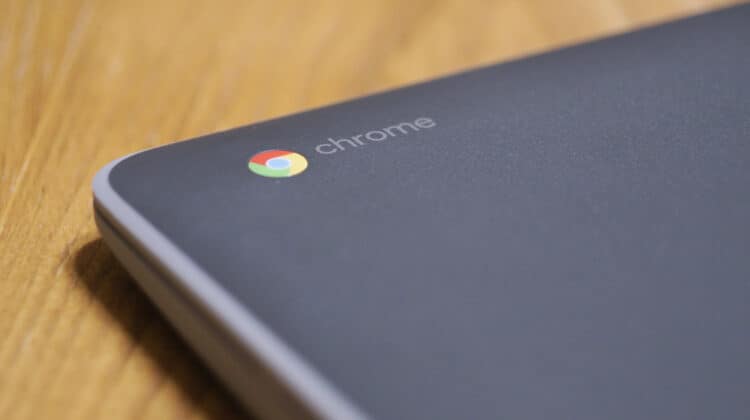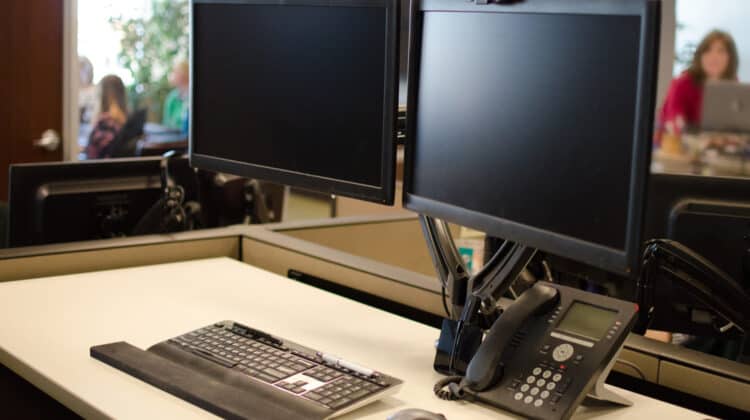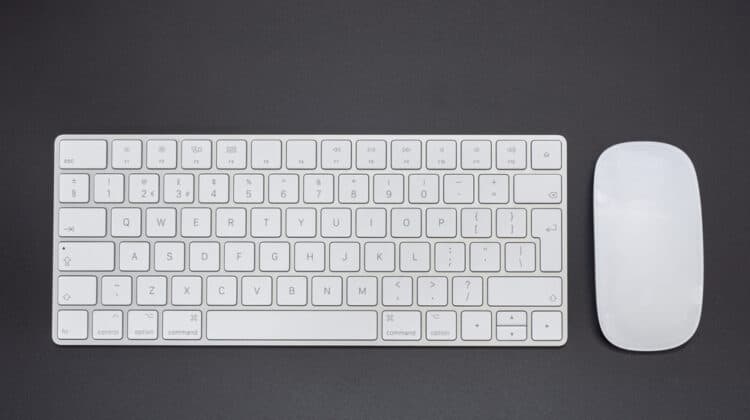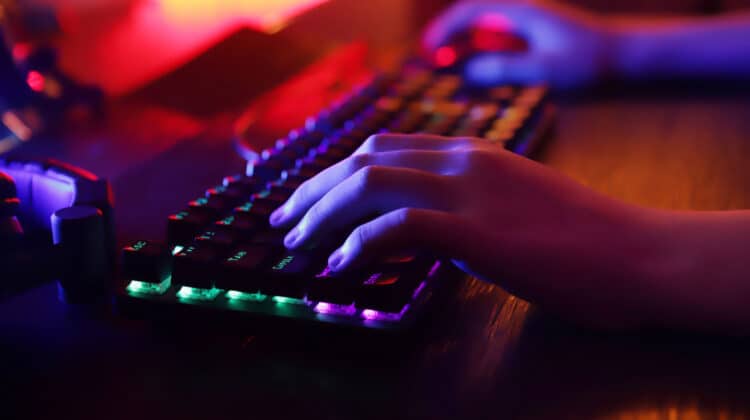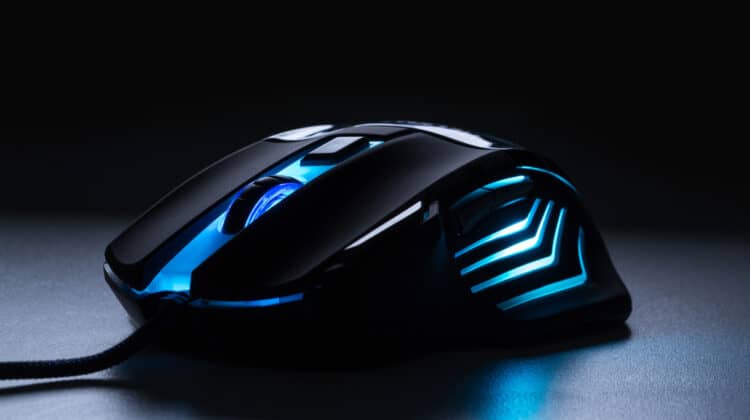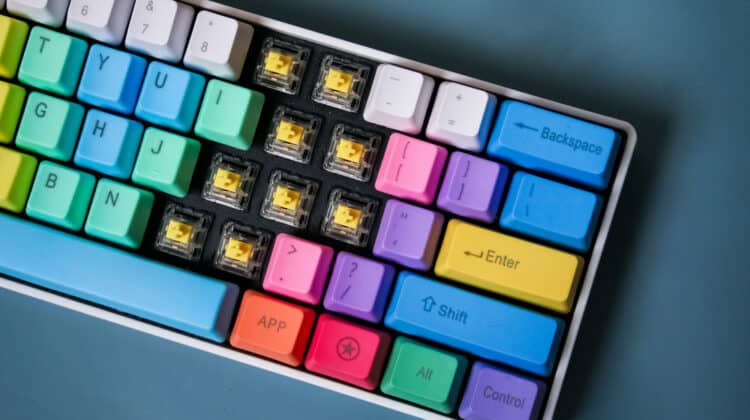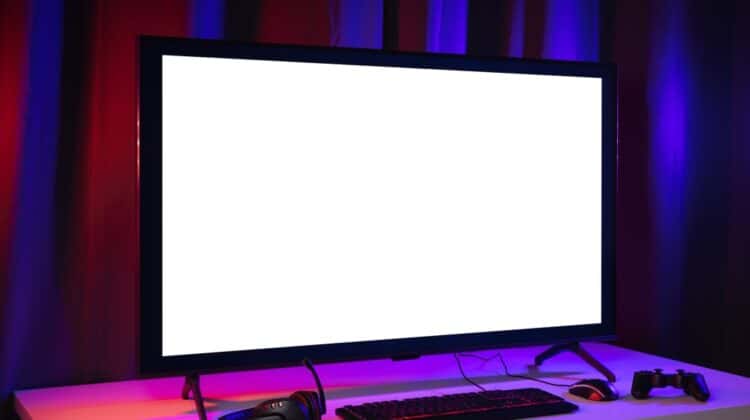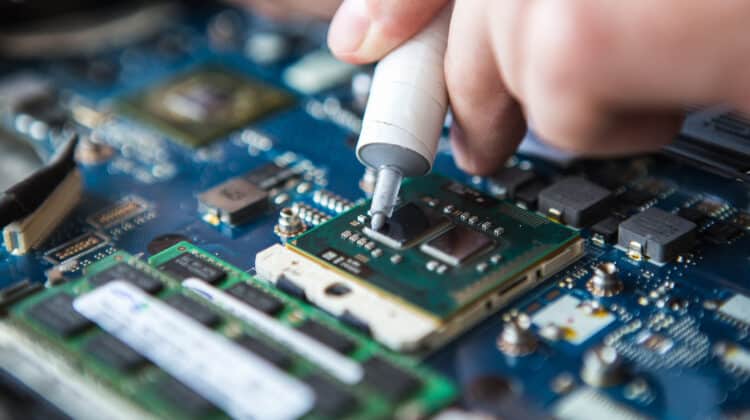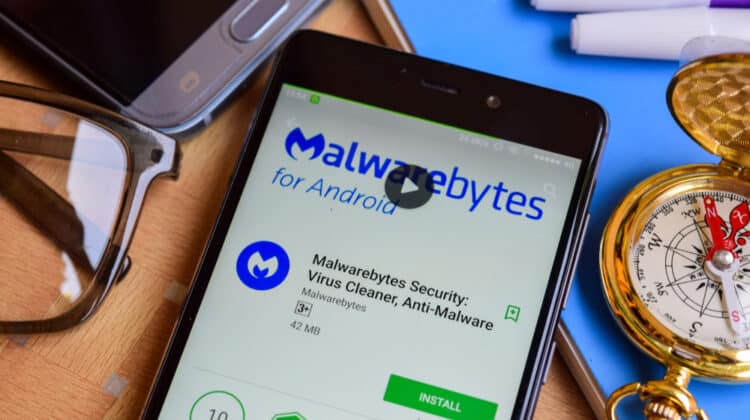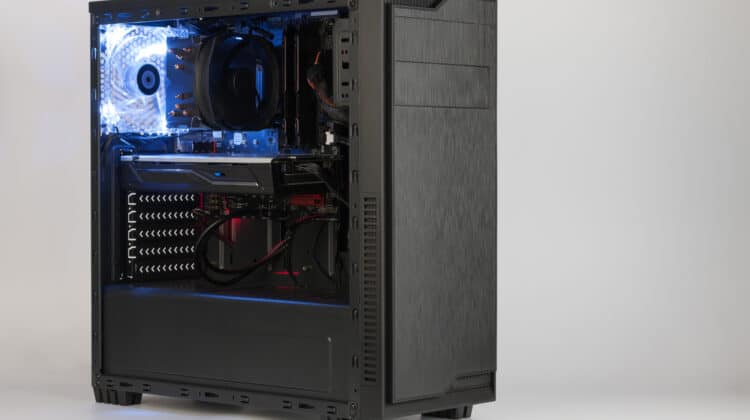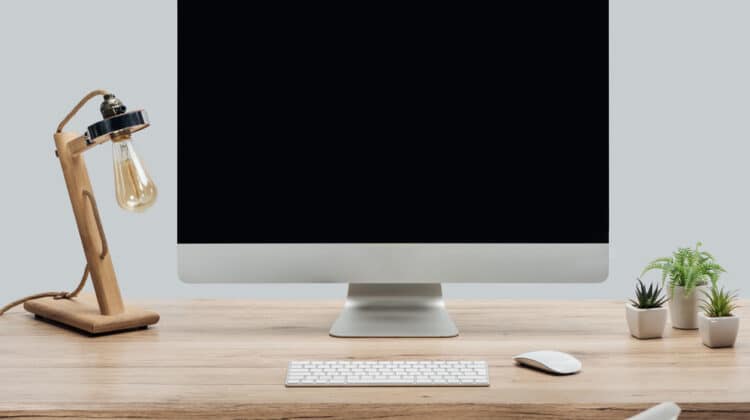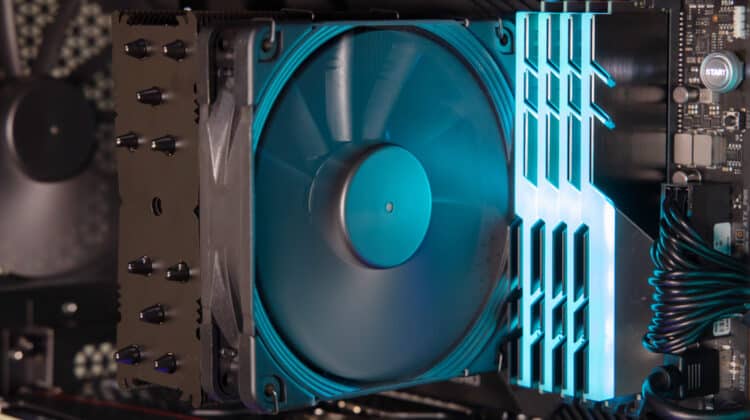
You’re browsing the web or playing your favorite game when the screen suddenly goes black without warning.
No matter how many keys you press, you can’t get the PC back to normal.
It’s a good reason to panic and assume the worst.
However, there’s no need to worry since you can easily detect the underlying cause.
You just need to be patient and rule out each possibility one after another.
Computer Screen Going Black Randomly (Causes, Fixes)

If it’s the first time you have gotten the black screen and it hasn’t been repeated, try restarting your computer.
It will remove the glitches that caused the issue, and hopefully, your issue won’t happen again.
If you don’t have access to the computer’s interface, you can restart the computer by pressing the reset button.
You can also force the PC to shut down with the power button by pressing it for a few seconds until the computer shuts off.
Another option is the Windows key sequence that wakes the screen.
Press the Windows key + Ctrl + Shift + B, and you’ll get a refreshed screen.
If you can’t get your screen back, open Task Manager by pressing Alt + Ctrl + Del and go to the Processes tab.
Find Windows Explorer, right-click it, and select Restart.
If the issue persists, you can try the following solutions.
1. Loose And Faulty Connections

The first thing you should check is the cables and connections.
If the connections between your GPU and the monitor are loose or faulty, you’ll experience various display issues ranging from artifacts to a black screen.
How To Fix
You can rule out faulty connections by carefully inspecting all the cables connected to the monitor.
Detach the cables and reattach them, ensuring they go all the way in.
You may also want to examine the ports and look for signs of damage like broken connector pins or dust buildup.
Cleaning the ports has effectively solved a wide range of display issues for many users.
Another solution is to try different ports and cables that you’re sure are functional.
For example, if you connect the monitor to the display adapter through a VGA cable, use the HDMI cable instead.
It’s also essential to make sure the cables aren’t damaged.
Any broken wires, bent spots, or damages inside the cable can lead to instability in signal transmission and create a black screen.
Another important factor is power.
Make sure the components are getting enough power by checking the power cords and outlets.
If you have a dedicated graphics card, it likely has a separate power supply.
While ensuring the video card is firmly seated inside the PCIe slot, disconnect and reconnect its power cable to rule out a weak connection.
2. Broken Monitor

Any problem within the monitor due to failed electronics can lead to display issues like a black screen.
The underlying issue may not be within the operating system, software, or hardware components inside the case.
How To Fix
The only way to ensure the monitor is faulty is to connect it to another computer and see if the black screen returns.
If so, you may want to have a technician examine it and see if it’s fixable.
Alternatively, you could connect another monitor to the computer and see if it works.
3. Problematic Peripherals

The external devices connected to your computer can create various problems if they go bad or have loose connections.
That’s even worse when you have many devices connected to your computer, which may conflict with each other.
How To Fix
After checking the cables and connections, you should rule out faulty peripherals.
Disconnect all connected devices, even the keyboard, and mouse.
Now restart your computer and see if the black screen goes away.
If so, you should identify the faulty peripheral or even connection port by connecting each device individually and watching its effect on the display.
After finding the culprit, you may need to replace it or update its driver.
4. Boot The PC In Safe Mode

Running the computer in Safe Mode will boot it with basic hardware, software, and settings, allowing you to access your interface if the screen is completely black.
To enter Safe Mode, restart your computer and when you see the manufacturer’s logo on the screen, press and hold the power button for ten seconds and turn off the device.
Turn on the computer again by pressing the power button.
Again, hold the power button for ten seconds and shut off the device.
Turn on the computer again, and it should boot into the WinRE mode after it restarts.
Once in the WinRE mode, click the Troubleshoot button and go to Advanced options > Startup settings.
Restart the computer by pressing the Restart button in the new window, and when the computer boots up, select the fourth option to start the Safe Mode.
Now, you can disable or adjust the settings that affect your display and aren’t accessible through the screen.
For example, if you want to disable the drivers or reinstall them, you need to work through the safe mode.
5. Outdated Drivers

Drivers are crucial in helping your system run smoothly.
Many users think that once they install the drivers, they’re good to go and don’t need further follow-up.
That’s far from the truth since drivers must always be updated to work free of bugs, glitches, and security threats.
Display issues are one of the most common consequences of outdated or faulty drivers.
Even if they’re updated, they may run into other issues like going missing or getting corrupted.
You should reinstall the drivers.
Go to Device Manager and find Monitor and Display adapters.
Right-click your monitor and your graphic card one at a time and select Update driver.
Follow the on-screen instructions to complete the process.
6. Faulty Graphics Card

The video card is the next display-related component that can cause the screen to go black.
After updating the drivers successfully, you should now make sure the graphics card doesn’t have hardware issues.
If you have a dedicated graphics card, it means you have an onboard card that’s disabled.
Go to Device Manager and click Display adapters.
Right-click the external graphics card and select Disable device.
Now, right-click the onboard graphics card and select Enable device.
If you can’t access Device Manager because the screen is black, you need to disable the dedicated graphics card by dethatching it from the case.
To do so, turn off the computer and disconnect all the cables and connections.
Switch off the key on the back of the case to ensure the computer has no power.
Now, find the graphics card and detach it from the PCIe slot.
Disconnect the monitor cable and plug it into the motherboard’s ports.
Turn on the computer and see if the screen normally works now.
Enable Onboard Graphics Card Through BIOS
If you can’t enable the graphics card from the Device Manager, it’s disabled in the BIOS.
Here’s how to enable your graphics card in BIOS:
Restart your computer and press any of the keys designated by your manufacturer while the computer is booting up.
Depending on the motherboard manufacturer, these keys can be DEL, F1, F2, F10, or F12.
Once in the BIOS menu, you should look for the graphics settings.
Different manufacturers may have various words and phrases to refer to these settings.
Look for settings with the word “Graphics,” like Internal Graphics or Video configuration.
Now, look for the internal or onboard graphic and select Enable.
If entering the BIOS isn’t an option, there’s an easier way, although it involves opening the laptop panel or the desktop case.
You can use the CMOS battery to reset BIOS.
Since the CMOS battery powers the BIOS firmware, reseating it will reset all the settings, and you can automatically enable the onboard graphics card.
Remember that you should always drain all residual power and ground yourself when dealing with internal computer hardware.
The CMOS battery is easy to identify since it looks like a watch battery, round and flat.
To remove the battery, disengage the clipping mechanism and pop it out.
Then, drain the motherboard’s residual power by pressing and holding the computer’s power button for 15 seconds.
This process will reset the CMOS battery to its default settings.
Now, insert the battery back and make sure it’s seated firmly.
The BIOS will re-enable the onboard graphics card when you turn on the computer.
7. Overclocking

If you play games on your PC or perform intensive tasks, you may need to get the most out of your graphics card or CPU.
Even if you have a powerful dedicated GPU, overclocking can affect your display since it pushes the card to its boundaries.
In addition, overclocking can overheat your components, leading to a wide range of issues.
Stop overclocking and see if it helps.
If you’ve enabled overclocking in BIOS yourself, you should know how to disable it through the same process.
You may have used other methods to boost the performance of your system, like third-party software.
These programs may create conflicts with other programs and affect your display performance.
Uninstalling these programs may also help solve the issue.
8. Faulty Laptop Battery

A bad laptop battery can cause various issues with the display and other components, even if you always run your computer plugged in.
If your battery is old or faulty, it may affect your display performance, especially when you install new programs or run intensive apps.
To ensure the battery is okay, take it out and run your computer plugged in.
If the black screen goes away, the battery has probably gone bad, and you need to replace it.
9. CPU Intensive Programs

Unless you perform highly intensive tasks on a low-end device, you don’t need to worry about heavy programs affecting your screen.
However, it doesn’t hurt to check your CPU usage while performing heavy tasks and see how they affect your CPU usage.
Go to the Task Manager by pressing Alt + Ctrl + Del together and enter the Processes tab.
You can see how much of the CPU the intensive program is using.
If it’s unreasonably high, you should stop it.
To continue using the program, upgrading your hardware, including GPU and RAM, is highly recommended to reduce the CPU load.
Note. While checking the Task Manager, you may want to check the background processes that hog your system resources and reduce performance.
If you find anything that’s not vital for your system’s operations, you can end it and see how it affects the black screen.
10. Windows Updates

In addition to the drivers, you should always ensure you have the latest Windows version to prevent bugs and system instability.
Although Microsoft pushes these updates regularly and installs them on your device automatically, you can double-check to make sure.
Go to Settings by right-clicking the Start button and selecting Update & Security.
If you have pending updates, you can see them in the updates window.
Otherwise, you’ll see the You’re up to date message.
Still, you can click Check for updates to see if anything is available.
In addition, select View optional updates to install anything that can help you improve your performance.
11. Uninstall Faulty Updates

Although keeping your system updated is always essential, you may occasionally get botched and buggy updates affecting different aspects of your system.
You may be able to remember when the issue started and if it happened immediately after a specific Windows update.
If that’s the case, you’re not alone, and you may find other users in online forums experiencing the same problem.
Unfortunately, you can’t do anything but wait for Microsoft to fix the bugs in the upcoming updates.
Still, you can uninstall the problematic update to return your system to a previous stable state.
To do so, go to View update history in the Windows update section and click Uninstall updates.
Find the update that created the issue according to its date and time, right-click it, and select Uninstall.
After restarting your computer, the system will revert to the state before the said update and hopefully run without the black screen problem.
The same thing can happen with driver updates.
If you recently updated a driver, it may be buggy and present the same issues as a Windows update.
There’s no harm in rolling back your drivers; if it doesn’t help, you can reinstall them.
Go to Device Manager and right-click the intended driver.
Click Properties > Driver > Roll back driver.
12. Power Settings

On a Windows device, you can tweak how it uses power for different purposes like reducing power consumption or boosting performance.
It also has a recommended setting in which the system will automatically adjust power consumption based on each task you perform at a given time.
These settings are accessible through Control Panel > Power Options.
You can see the selected plan: Balanced (Recommended), Power saver, or High performance.
As you see, the recommended setting is Balanced because it optimizes performance and power consumption, and you don’t need the other two options to boost your performance for normal Windows operations.
Since these are a series of settings, they can affect different aspects you may not notice or control.
You can adjust settings like screen brightness if you want higher performance or lower power consumption.
To change the settings to Balanced, click Create a power plan on the left side of the screen and select Balanced in the new window.
13. Newly Installed Apps

Third-party programs, especially antivirus software, can affect your display and cause the black screen issue.
If you’ve recently installed a third-party program, you can easily identify and uninstall it because it’s the most likely cause.
Go to Settings > Apps and find the problematic app.
Click on it and select Uninstall.
You can uninstall the antivirus through the same steps.
Don’t worry about exposing your system to viruses and online threats because you can rely on Windows Defender to protect your system automatically.
If the issue doesn’t go away, you can reinstall them.
14. Startup Apps

When you turn on your Windows PC, several applications run in the startup process and continue running in the background to help your system run smoothly.
However, some other programs may tweak their settings to run during the startup without you noticing and run in the background, although they’re not essential.
These programs can cause various issues, including random screen blackouts.
You should run your system in Clean Boot mode to identify these apps.
Here’s how to do it:
Type System Configuration in the taskbar’s search box and select the first result.
Go to the Services tab and enable Hide all Microsoft services by checking the box next to it.
Click Disable all > Apply.
Click the Startup tab and select Open Task Manager.
Once in the Task Manager window, go to the Startup tab and change all the enabled services into Disabled.
Remember which services you disabled because you’ll need them later.
Close the window and go back to System Configuration > Startup.
Hit Ok and restart your computer to run it in the Clean Boot mode.
Run the system in the Clean Boot mode for a while to see if the black screen returns.
If it doesn’t, you need to identify the problematic startup app.
The best way is to use a process of elimination, enabling half of the programs and keeping the rest disabled.
If the screen goes black, the culprit is among the enabled programs.
Now, disable half of those programs and see what happens.
Again, if the screen goes black, the problematic app is among the enabled apps and vice versa.
Repeat these steps until you detect the app and uninstall it.
If the screen goes black in the clean boot, you’re probably looking at a hardware- or OS-related issue.
You can restore your Windows to a previous point and see if it helps.
NEXT: What Kind Of Data Can Be Lost When A Computer Is Turned Off? (Explained)
